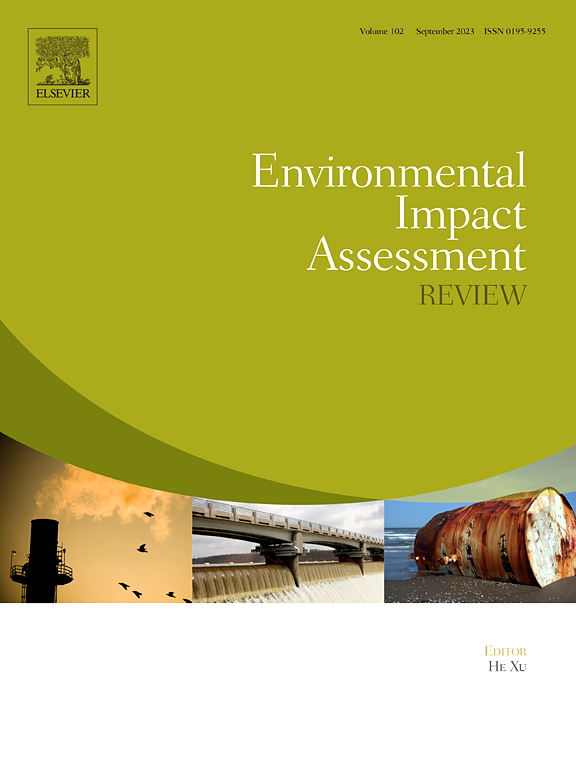Climate-driven spatiotemporal variation of soil erodibility in China
IF 9.8
1区 社会学
Q1 ENVIRONMENTAL STUDIES
引用次数: 0
Abstract
Understanding the long-term variation of soil erodibility is essential for effectively addressing the risk of soil degradation and erosion, particularly against the backdrop of global climate change. However, the climate change-driven variation in soil erodibility (K factor) has not been studied yet. This research utilized 9579 historical soil sample data from China collected in the 1980s and 2010s, along with the future climate data from Coupled Model Inter-comparison Project phase 6 (CMIP6) under SSP1–2.6 and SSP5–8.5 scenarios, to investigate spatiotemporal change of soil erodibility in China from 1980 to 2100. The Erosion-Productivity Impact Calculator (EPIC) model and Quantile Regression Forest (QRF) were employed to calculate and predict K values for the 0–30 cm topsoil, respectively. The QRF prediction model achieved acceptable accuracy, with an R2 of 0.485. Spatially, the distribution pattern of the K factor from 1980 to 2100 remained relatively consistent, with higher values in the central-eastern, northeastern regions, and lower values in the northwestern, southern regions. Historically, a decreasing trend was observed in the K factor between the 1980s and 2010s. In the future, the K factors are projected to increase in northern China and decrease in southern China under both scenarios, with more pronounced changes under the SSP5–8.5 scenario. Elevation and climate variables have been identified as the most important factors influencing the spatial and temporal changes of the K factor. Land use conversion and economic factors also influence the K factor changes. This study provides new insights into the impacts of climate change on soil resources and offers scientific support for the development of adaptive soil conservation policies, indicating that policymakers must adopt region-specific land management strategies to mitigate future changes in soil erodibility.
气候驱动下中国土壤可蚀性时空变化
了解土壤可蚀性的长期变化对于有效应对土壤退化和侵蚀风险至关重要,特别是在全球气候变化的背景下。然而,气候变化对土壤可蚀性(K因子)变化的影响尚未得到研究。利用80年代和2010年代中国9579份历史土壤样品资料,结合SSP1-2.6和SSP5-8.5情景下的CMIP6期未来气候资料,研究了1980 - 2100年中国土壤可蚀性的时空变化。采用侵蚀生产力影响计算器(EPIC)模型和分位数回归森林(QRF)模型分别计算和预测0 ~ 30 cm表层土壤的K值。QRF预测模型获得了可接受的准确度,R2为0.485。从空间上看,1980—2100年K因子的分布格局较为一致,呈现中东部、东北部较高,西北部、南部较低的趋势。从历史上看,20世纪80年代至2010年代,K因子呈下降趋势。未来两种情景下,中国北方的K因子均呈增加趋势,南方的K因子均呈减少趋势,其中SSP5-8.5情景下变化更为明显。海拔和气候变量是影响K因子时空变化的最重要因子。土地利用转换和经济因素也影响K因子的变化。该研究为气候变化对土壤资源的影响提供了新的见解,并为适应性土壤保持政策的制定提供了科学支持,表明决策者必须采取有区域特色的土地管理策略来减缓未来土壤可蚀性的变化。
本文章由计算机程序翻译,如有差异,请以英文原文为准。
求助全文
约1分钟内获得全文
求助全文
来源期刊

Environmental Impact Assessment Review
ENVIRONMENTAL STUDIES-
CiteScore
12.60
自引率
10.10%
发文量
200
审稿时长
33 days
期刊介绍:
Environmental Impact Assessment Review is an interdisciplinary journal that serves a global audience of practitioners, policymakers, and academics involved in assessing the environmental impact of policies, projects, processes, and products. The journal focuses on innovative theory and practice in environmental impact assessment (EIA). Papers are expected to present innovative ideas, be topical, and coherent. The journal emphasizes concepts, methods, techniques, approaches, and systems related to EIA theory and practice.
 求助内容:
求助内容: 应助结果提醒方式:
应助结果提醒方式:


